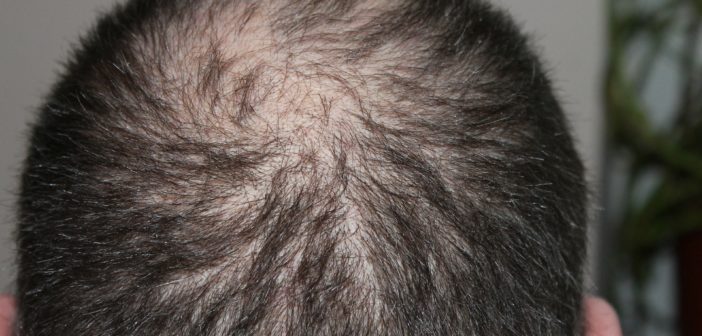DHI (direct hair implantation) is one of the newest techniques for hair transplant. This recently developed technique is currently used in many clinics effectively.
We prepared a comprehensive guide for you that includes all details you want to know about DHI procedure that has differences compared to other techniques. With this guide, you will get rid of all questions and you will have more clear understanding about DHI technique.
What Is DHI?
DHI is a technique in which hair transplant is done directly. The most important difference regarding this procedure is the use of a special equipment called Choi pen. Due to the way Choi pen is used, DHI is also known as “pen hair implant”. Grafts obtained from donor area are placed into this special pen and then implanted into the bald area. Pens used in DHI technique open channels for transplantation and are used to plant grafts at the same time. This way, procedure for each plantation is completed as one step, instead of two steps. All these reflects success in the application.
With this guide, you will get rid of all questions and you will have more clear understanding about DHI technique which is preferable over drugs like Propecia, which can be dangerous.
What Are The Features of DHI?
DHI has been developed based on people’s requirements in this area. Accordingly, it can be said that its features affect the success of the final result in a positive and direct way. Features can be listed as below:
- A new hair brush is prepared and used for each patient.
- With the equipment called as Choi pen, channel is opened on bald area and graft is placed at the same time.
- Since there is no need to open channels as a separate operation step, recovery period is shorter.
- Channels opened by Choi pen fit well with grafts, which means less bleeding.
- Hair planted with this technique is permanent.
- Haircut is not a must before the application.
- While planting grafts with Choi pen, plantation angle can be adjusted easily. This is a very important point for the natural look at the end.
- In this method, possibility of harming hair follicles is 20 times less compared to other methods. For example, the ratio of hair loss is 2% in FUE technique whereas the same value is 0,1% in DHI technique. The result is simply less hair follicle loss.
- In DHI, more plantation can be possible per cm2. That means hair to look denser and more voluminous.
When these features are considered, it can be said that DHI technique is safer, has high success rate and it provides denser hair transplantation.
What Are The Differences of DHI Compared to FUE?
The most preferred hair transplant methods today are DHI and FUE. These two techniques have differences compared to each other as well as some similarities. Grafting procedure is the same in both techniques. To do so, one by one picking is done from the donor area. This way, there is no mark left in the related area and grafts are extracted firmly.
Procedures after grafting are completely different. In FUE, channels are opened in bald area first. During this time, grafts are places inside a special solution. After channel opening procedure is completed, grafts are placed into these channels one by one.
In DHI technique, on the other hand, obtained grafts are directly places inside the special pen. With this pen, hair is directly planted into the channel. There is no separate channeling procedure in this technique. Pen creates channels of which depths are suitable and grafts are planted into these channels.
Differences and similarities between DHI and DUE techniques are as explained above. Pens used in DHI provides the special advantages of this technique. Prominent features of such advantages are as follows:
- With pens, much denser plantation is possible. 45-55 grafts can be planted in 1 cm2 area in FUE whereas 80-90 grafts can be planted in the same area in DHI.
- Using Choi pen prevents harm to natural hair strands.
- Channels are opened exactly for each graft. So, unnecessarily wide channels are not opened.
- Recovery period is much shorter.
- Final result looks more natural.
- Less bleeding occurs.
- Hair transplant is possible without haircut requirement.
Suitable Candidates for DHI
DHI can be applied to anyone not having a health problem which may prevent hair transplant procedure. At this point, there is no limitation. The most suitable candidates for this procedure are people who:
- Have hair loss problem
- Need frontline hair transplant
- Are second-time patients who got hair transplant in the past
- Want to have beard, moustache or eye brow transplant
- Don’t want to have haircut before hair transplant
- Need denser hair transplant
Things To Do Before DHI
There are some important points, which should be paid attention by hair transplant candidates, in DHI technique. Things to pay attention before hair transplant can be listed as below:
- Hair and scalp have to be washed and cleaned.
- Hair styling products like hair spray, hair gel etc. shouldn’t be used.
- Patients have to provide information about their medical history as well as medicines that are actively taken.
- At least 1 week before the operation, blood thinning medicines have to be discontinued.
- While coming to clinic for hair transplant, clothes that can be easily removed from head should be wore.
- Tobacco, alcoholic beverage and coffee consumptions have to be discontinued.
How Is DHI Applied? | Application Stages
As other hair transplant techniques, DHI also consists of a few different stages. These stages can be listed as below:
- Grafts to be obtained from donor area are loosened up via micro motor. This way, follicle removal is way easier.
- Hair follicles are grouped based on their contents and then they are prepared for hair transplant.
- Direction and angle of plantation are determined. This stage is crucial to obtain natural look.
- Custom Choi pens are used in DHI technique. These pens are suitable with patient’s hair follicles and their widths.
- Grafts are placed inside the pen carefully.
- Pens are applied into bald area and the procedure is completed.
Things to Do After DHI
For procedure success in DHI, post-procedure period is also important. Things for patients to pay attention after the procedure can be listed as below:
- The first hair washing should be done 36 hours later, as directed by the doctor. This is generally done at the clinic.
- To prevent swelling, 15 degree sleeping pillow that is provided by the clinic has to be used during sleeping.
- After the first hair washing, daily hair washing has to be done as directed by the doctor for the next 15 days, every day.
- Only the first washing is done at the clinic, others can be done at home.
- After washing hair, drying has to be done by using a clean, soft towel without applying pressure.
- During drying, hair dryer mustn’t be used. If it is necessary, cold mode should be used.
- After hair transplant, scabbing will occur on scalp. These scabs will go away in 12-15 days. If they persists after this period, you should consult your doctor.
- You should protect your hair from direct sunlight, sea water and pool water during the first 2-4 weeks.
- During the first two weeks, scalp has to be protected from external impacts and applying pressure should be avoided.
- Medicines prescribed by the doctor has to be taken on time and as prescribed.
If you are planning to get DHI Hair Transplant done, you can get in touch with Cosmeticium which is the best place for DHI Hair Transplantation in Turkey.





1 Comment
Pingback: Hair Transplant : What is DHI Method ?